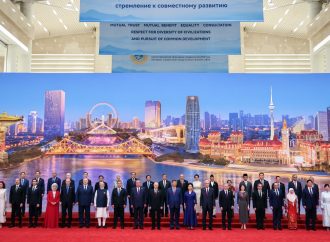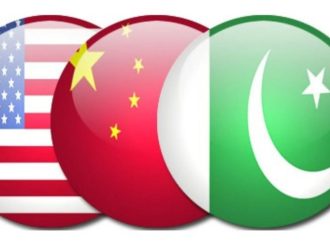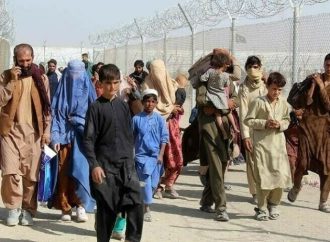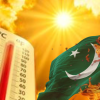Author Recent Posts Afrasiab Khalid Latest posts by Afrasiab Khalid (see all) Explainer: Shanghai Cooperation Organization – September 26, 2024 Bangladesh after Hasina: What’s the way forward? – September 4, 2024 US Presidential Elections – August 27, 2024
The United States presidential process is a complex one that encompasses a series of stages. These stages include Primaries, Party Conventions, the Election day itself, the Electoral College and the Role of Swing States.
Pre-Election Phase
Before the formal electoral process takes place candidates have to prepare for their presidential campaigns. This preparation often includes fundraising in the form of Super PACS (Political Action Committees), assembling a countrywide campaign team, and creating an agenda to campaign on. Candidates can begin declaring their intention to run as early as they wish even years ahead of the election date.
Party Primaries
The first step in the electoral process is in the form of party primaries. Primaries are state elections where registered party members vote for their given candidate internally among a cohort of candidates. A strong performance in the initial primaries often propels candidates into the national spotlight whereas a poor result may lead to withdrawals from the race. An example of this was seen in 2016 where Donald Trump’s strong performance in the initial primaries led him to an impressive lead throughout the Republican nomination race.
Party Conventions
After the primary season both major political parties, Republican and Democrats, hold a national convention. The purpose of the convention is to officially nominate the party’s candidate for president. The conventions also serve as a platform for party unity, showcasing prominent members as speakers and highlighting the party’s agenda. Also, the vice presidential candidate is selected at the convention.
General Election Campaign
Once the conventions conclude, candidates turn their attention to debates, rallies, advertisements and grassroot volunteering. A critical aspect of this phase is the selection of campaign issues through polling and focus groups to resonate with voter concerns, examples of which are Trump in 2016 using the “MAGA” slogan to highlight the issue of stronger borders or Obama using the slogan of “Change” in 2008 to highlight that those working in DC must be replaced in the lead up to the election.
Presidential Debates
Candidates also engage in a series of presidential debates for public exposure and to present their policies in comparison to their opponents. The debates can significantly alter public opinion as recently seen in the June 27 debate between Donald Trump and Joe Biden leading to an internal uprising in the Democratic Partly culminating in the dropping out of Joe Biden from the 2024 Presidential race.
Red and Blue States
In U.S. presidential elections, states are often categorized into three main sections based on their voting patterns: red states, blue states, and swing states, also referred to as purple or battleground states. Red states are those that predominantly vote for Republican candidates in presidential elections. Historically, these states have conservative roots, embracing values such as limited government, anti-abortion, anti-LGBT and favor anti-immigration policies. Some notable red states include Texas, Alabama, and Tennessee etc. The Republican Party’s base in these states is strengthened by demographic factors such as rural populations, Christian communities, and lower rates of urbanization. The solidifying of red states means that republican candidates often prioritize their energy and campaign efforts in battleground states, recognizing that red states are less likely to swing in favor of Democratic candidates.
On the other hand, blue states typically vote for Democratic candidates. These states are characterized by more liberal ideologies, supporting government intervention in economic issues, social equity, and progressive policies. Examples of major blue states include California, New York, and Illinois etc. Blue states often have a higher population of university going voters, are urbanized and have pro-immigration policies. The Democratic Party’s appeal in these regions includes a focus on social justice, environmental protection, women rights and healthcare reform. As is the case with red states, the political allegiance of blue states are quite stable, leading Democratic candidates to focus their attention on swing states where they can gain support.
Role of Swing States
Swing states are those that do not consistently vote for one party. They can be detrimental in determining the outcome of an election as their electoral votes can swing to either party depending on factors such as economic conditions, candidates personal appeal, and voter turnout. Notable swing states are:
- Nevada
- Arizona
- Wisconsin
- Michigan
- Georgia
- North Carolina
- Pennsylvania
These states often have a mix of urban and rural populations, diverse demographics, and differing economic interests. Due to their often unpredictable nature they are the center of attention during campaigns with candidates focusing resources and campaign efforts.
Role of Electoral College on Election Day
The general election occurs on the first Tuesday after the first Monday in November. Voters vote for their presidential candidate, but in reality they are voting for electors pledged to that candidate. Each states number of electors corresponds with its representation in Congress (Senators + House Representatives). In total 538 electors exist and a candidate needs a majority of 270 electoral votes to win the presidency. In the 2016, Hillary Clinton won the popular vote by securing 65 million votes compared to Donald Trump who had 63 million votes. Despite having a lead in the popular vote, Clinton did not become president due to the Electoral College system. As a result, even though Clinton received more votes nationwide but the distribution of those votes in relation to the Electoral College led to Trump winning the presidency.
Post-Election Period
After Election Day, electors meet in their state capitals in December to formally cast their votes. If a candidate has won the majority in a state they receive all of that state’s electoral votes. The electoral votes are then sent to Congress, where they are officially counted in a session of Congress in early January. If one candidate secures 270 electoral votes, they are declared the president-elect and go on to take oath on January 20th.
- Explainer: Shanghai Cooperation Organization - September 26, 2024
- Bangladesh after Hasina: What’s the way forward? - September 4, 2024
- US Presidential Elections - August 27, 2024





















Leave a Comment
Your email address will not be published. Required fields are marked with *